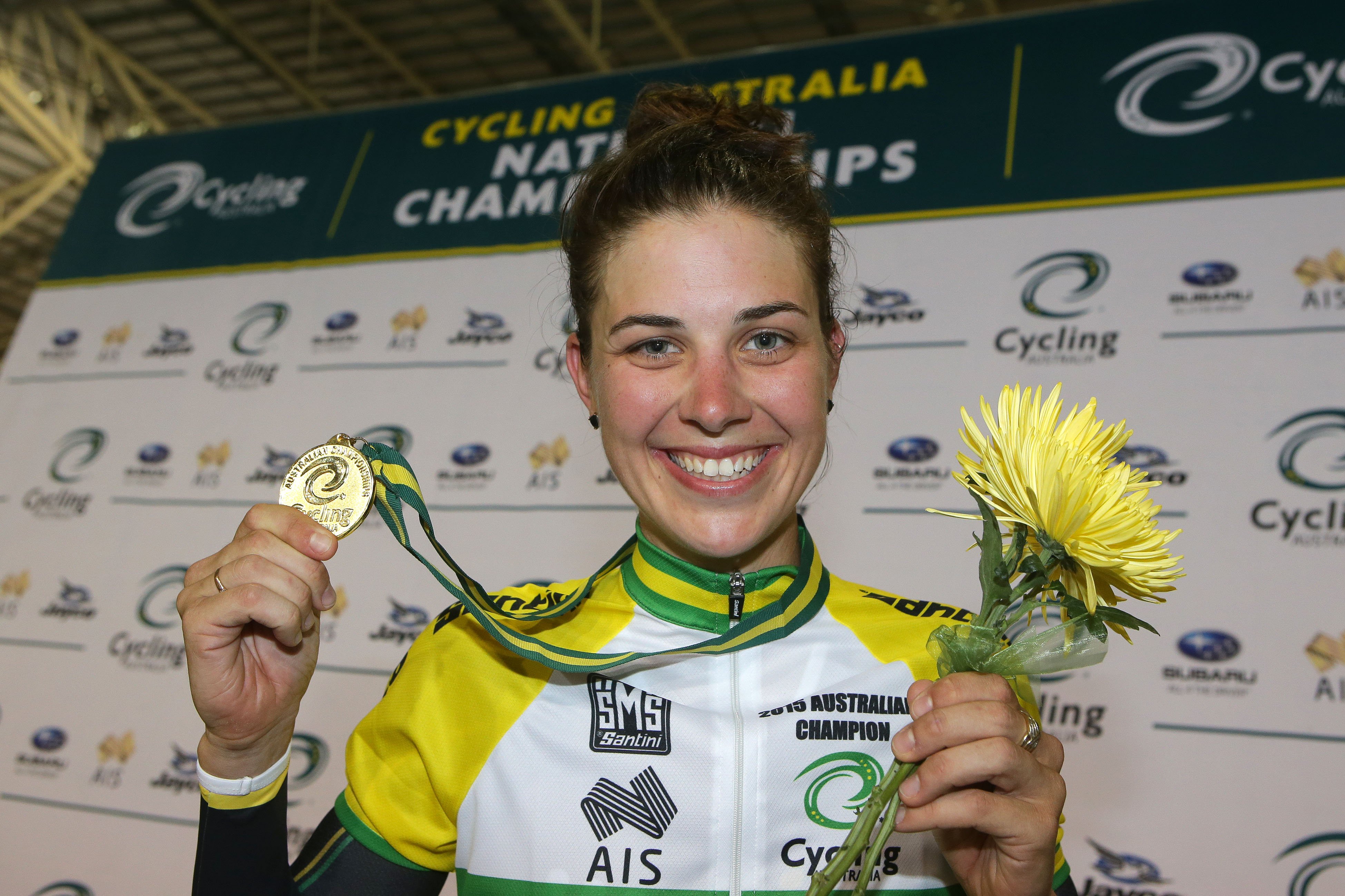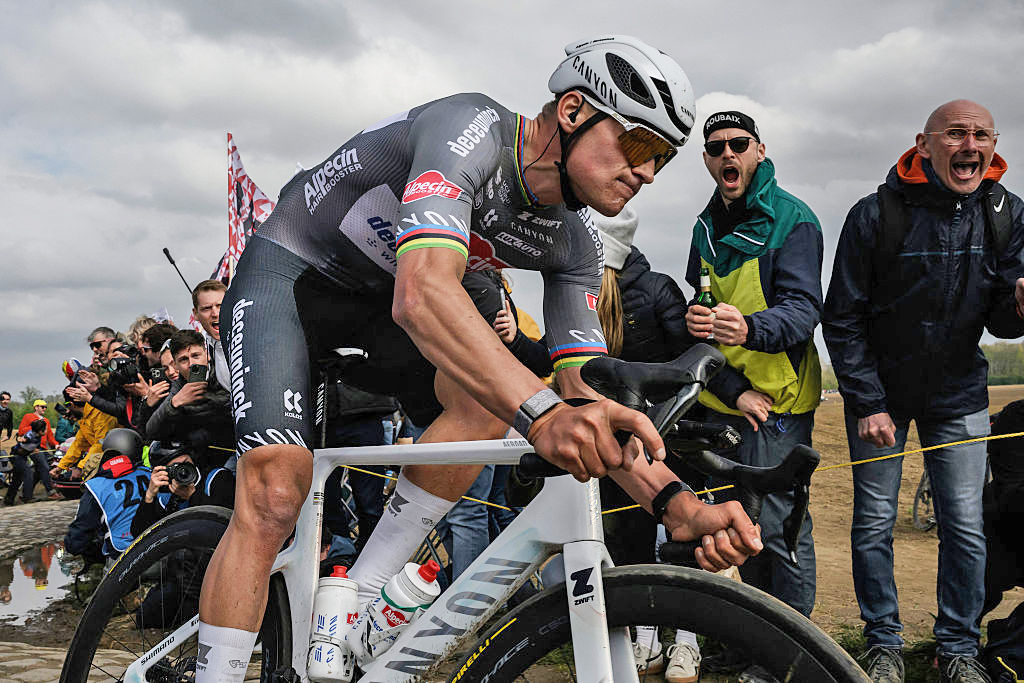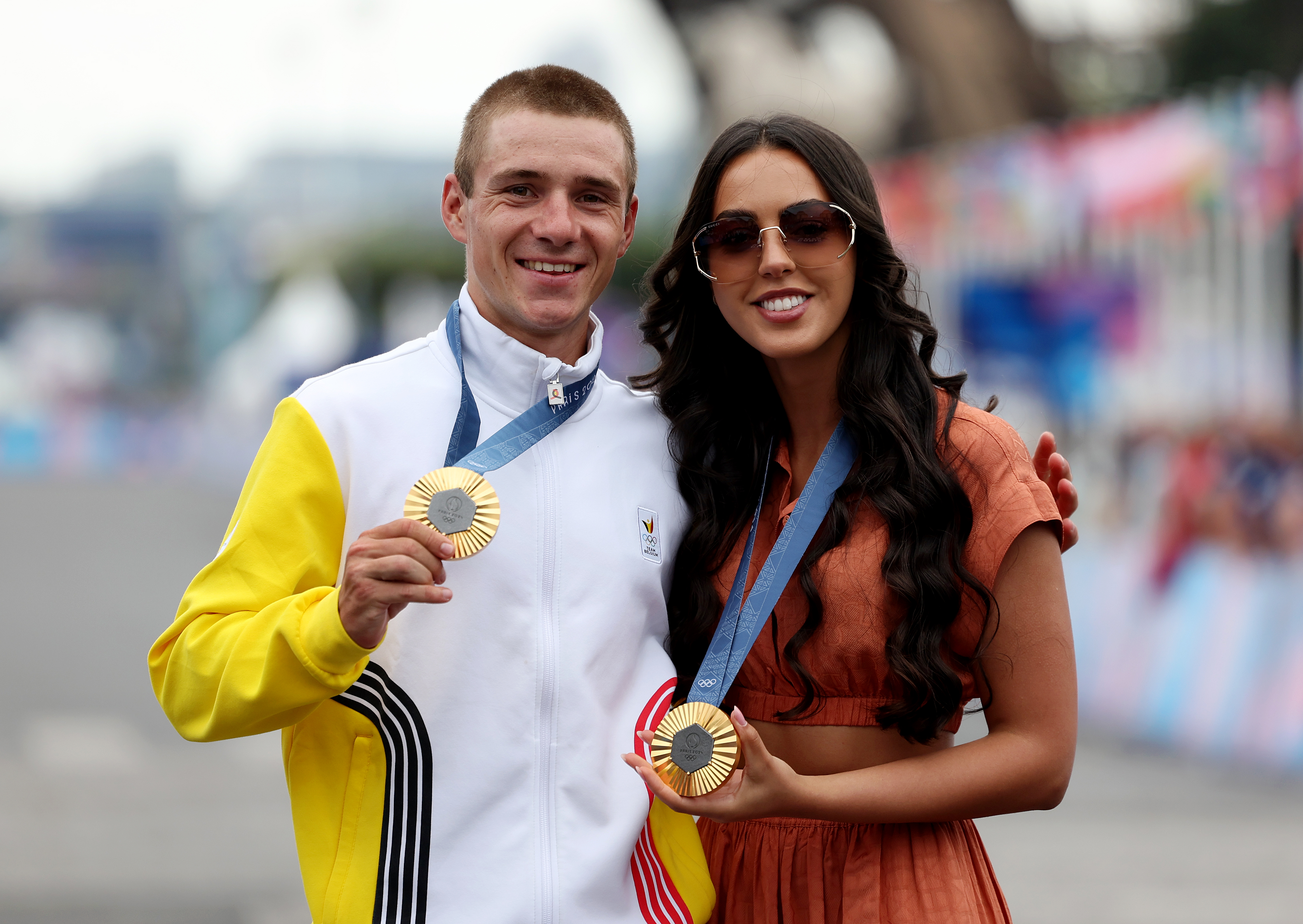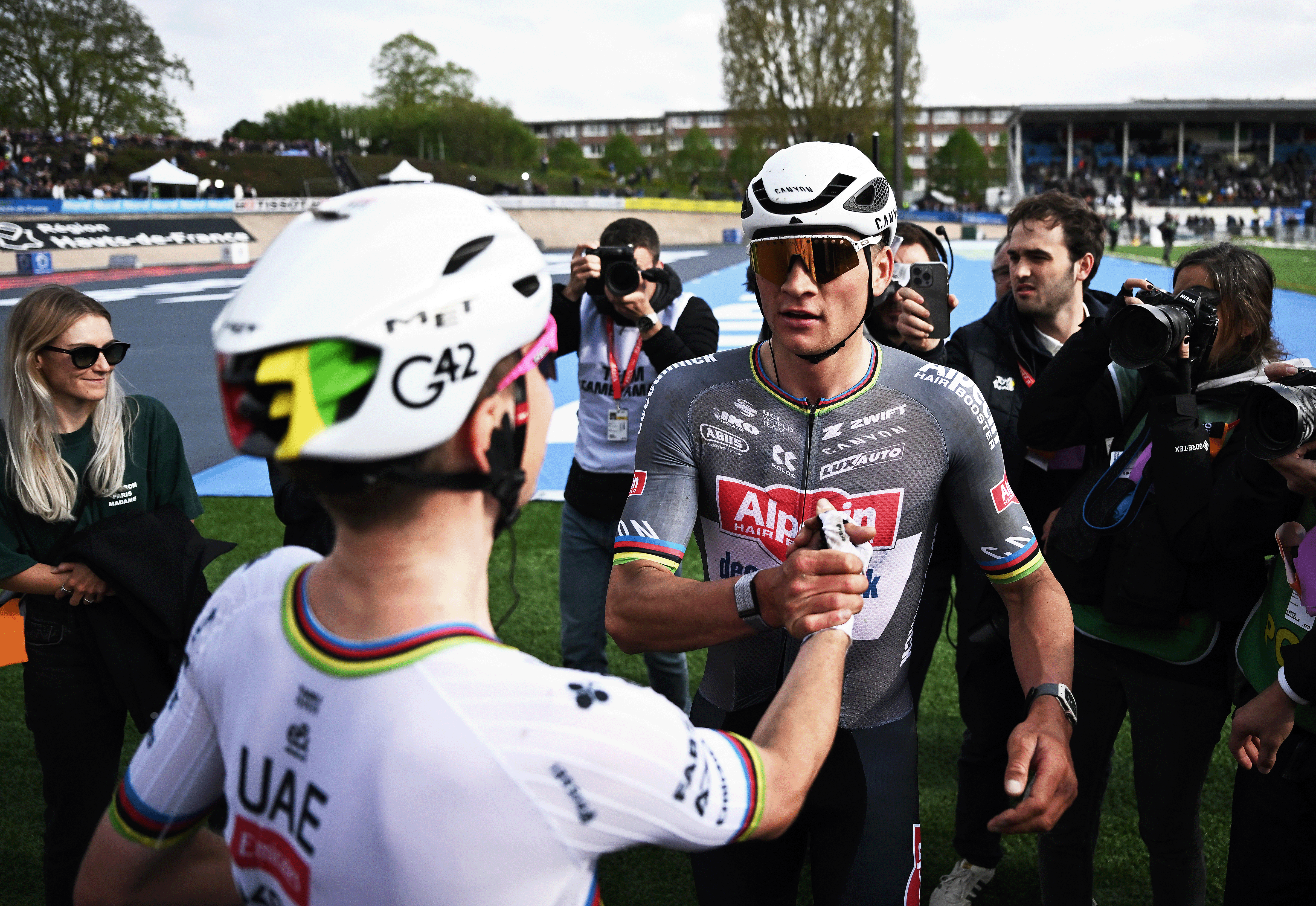Vuelta a España 2022 – The Essential Preview
All you need to know about the route, contenders, and storylines for the 77th edition of the Spanish Grand Tour
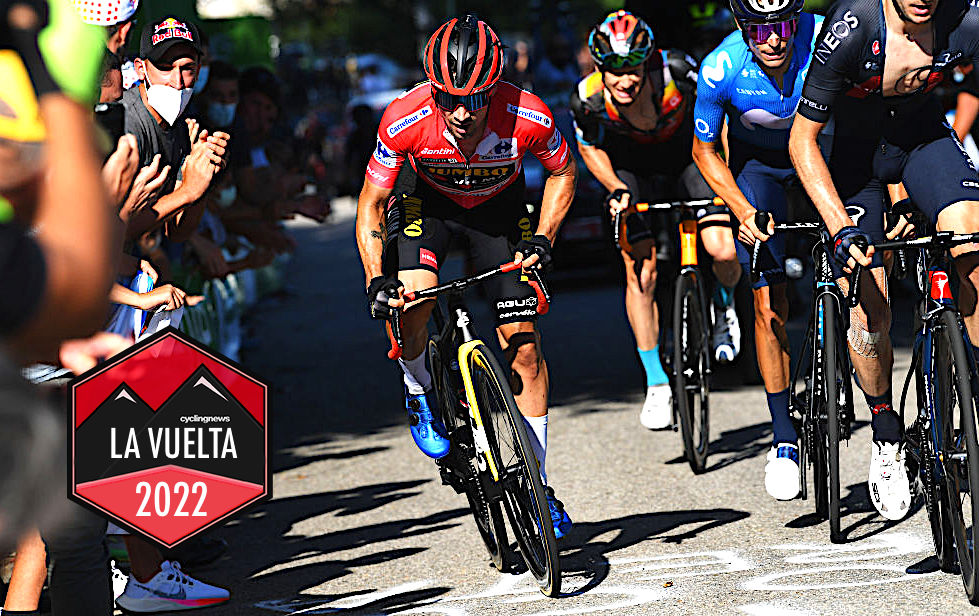
All it took was one Instagram picture posted by Primož Roglič (Jumbo-Visma), grinning above the glittering Mediterranean near Monaco as he enjoyed his first post-Tour training ride, and a first uncertain sign that history could be made in the 2022 Vuelta a España finally appeared.
The logic for this landmark in the Vuelta a España is simple: if Roglič rolls down the start ramp at Utrecht on August 19 as leader of the ‘clockwork banana’, as the Spanish press have now dubbed the all-conquering yellow and black-clad Jumbo-Visma team, the Slovenian will be aiming for a record-equalling fourth title.
No other rider bar Roberto Heras has taken four overall wins in the Vuelta. In Heras' case that was in 2000, 2003, 2004 and 2005, even if the fourth victory, enshrouded in a possible doping case, was only declared valid after a drawn-out court case.
Should Roglič stand tallest on the final podium on Madrid’s Paseo de la Castellana on September 11, he will become the first rider in history to take four straight wins in the Vuelta and the first to take four consecutive victories in any Grand Tour since Miguel Indurain in the Tour de France between 1991 an1995. It would also be another show of tenacity, as he bounces back from a third successive Tour disappointment.
Roglič’s participation is still uncertain, but regardless of whether or not he starts, the Vuelta field will not be short of familiar names. In what is perhaps the highest ever number of former podium finishers and winners ever to line up again in the same Vuelta, no fewer than six former winners look set to be present. Roglič could be joined by Alejandro Valverde (2009), Vincenzo Nibali (2010), Chris Froome, (2011, 2017), Nairo Quintana (2016), and Simon Yates (2018). Former podium finishers Rafal Majka, Hugh Carthy, Esteban Chaves, Enric Mas, Richard Carapaz, Jack Haig and Miguel Angel Lopez are also down to take part.
Despite the star-studded line-up, the absence of Tadej Pogačar (UAE Team Emirates) remains a real pity, given that he and Roglič have not gone head-to-head in a Grand Tour on equal terms since the 2020 Tour de France. But on paper, the level of competition that Roglič faces will surely still be fierce enough to provide a high level of entertainment over the next three weeks.
So who could beat the clockwork banana? Fresh off finishing second in the Giro d’Italia, Richard Carapaz (Ineos Grenadiers) is a man on a mission in this year’s Vuelta after going so close in 2020. But Roglič’s breathlessly exuberant strategy that Autumn, gate-crashing his way to stage wins wherever he could and grabbing handfuls of GC-strengthening time bonuses in the process, proved too much even for Carapaz.
Last year Roglič used a similar, ‘Tigger the Tiger’ strategy of bouncing off the front of an increasingly weary peloton at every available opportunity to gain a third Vuelta, when he also put in some astonishing attacks at Covadonga and on the hills of Velez-Malaga. But Carapaz, on the other hand, is in a very different place to 2020.
Third in the Tour de France in 2021 and second in the Giro d'Italia this spring have underscored his ability across three weeks. But the lack of an overall win since he flew under the radar to win the Giro in 2019 has left the Ecuadorian needing to show something more than an ability to hit Grand Tour goalposts.
The third top favourite has to be Simon Yates (BikeExchange-Jayco), winner in 2018. After a rollercoaster Giro d’Italia, Yates has shown rising form with a brace of minor successes this August in Spain. Whether he can get back to the top of the podium in Spain’s premier event is another matter, but his almost uncanny ability to sniff out a stage win and gain time overall when other GC contenders are hesitating all around him makes the man from Bury a perennial threat.
The Evenepoel factor
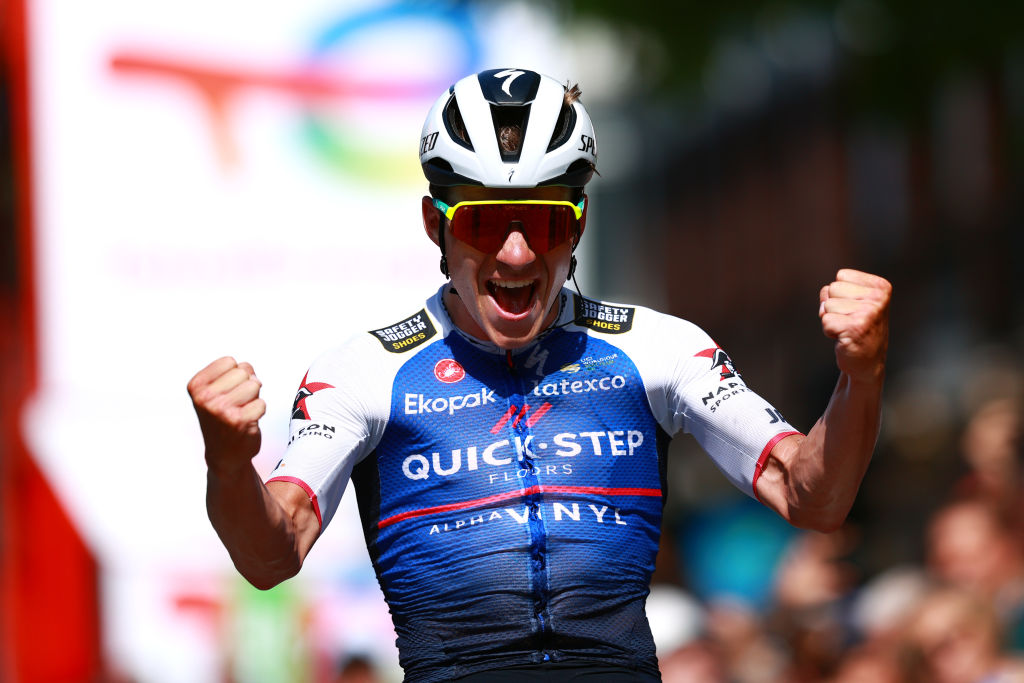
Beyond that, the host of possible contenders is simply vast. Remco Evenepoel (QuickStep-AlphaVinyl) has already taken a huge step forward this year in the hilly Classics, securing both Liège-Bastogne-Liège and the Clásica San Sebastián.
But the question marks over his Grand Tour potential have been lingering since the 2021 Giro, when a hugely promising start disintegrated remorselessly on the dirt roads of Tuscany and the crushing slopes of the Zoncolan. Evenepoel might provide an answer in the mountains of Asturias and Andalucía. Certainly, the small army of Belgian journalists expected to join the Vuelta press corps this year to follow the Belgian star will hope so.
Evenepoel’s strategy, on paper, will be to open up with a strong team time trial and then hope that he can gain enough in the Alicante individual time trial to then defend his lead in the race’s toughest mountains in the second week. It will be interesting to see, too, what role teammate Julian Alaphilippe plans on having in the Vuelta. But quite apart from Carapaz and Roglič, Evenepoel faces numerous potential challengers if he is going to leave his mark on GC and not just in the Belgian newspapers.
Sergio Higuita and Jai Hindley (Bora-Hansgrohe) will present a formidable duo for a squad that has already secured its first Grand Tour this season, even if rumours that Aleksandr Vlasov may be added to the German team's Vuelta mix have not proved to be true.
Ben O’Connor (AG2R-Citroen) started the season keen to complete his Grand Tour ‘set’ of stage wins in the Vuelta, but after his crash-ridden Tour, the man from Perth will want more now from 2022. It's a similar scenario for João Almeida (UAE Team Emirates), forced out of the Giro with COVID-19. The Portuguese rider warmed up for the Vuelta with a fine stage win on the final day of the Vuelta a Burgos.
Vincenzo Nibali lines out for his final Grand Tour appearance, while his Astana-Qazaqstan teammate Miguel Angel López races after he was briefly suspended by the team when he was reportedly questioned by Spanish authorities as part of a drug trafficking inquiry. López since placed third overall in Burgos, and the Colombian will be eager to make amends for his singular meltdown on the final weekend of last year’s Vuelta.
But the list of contenders doesn't stop there. The Tour proved that Nairo Quintana (Arkéa-Samsic), even in his 30s, can never be ruled out. Meanwhile, Bahrain Victorious, with Mikel Landa, Jack Haig and Gino Mäder are a team that cannot be ignored.

Last but surely not least, while some riders’ seasons may hinge on the Vuelta, arguably none have the Sword of Damocles dangling over their heads as dramatically as Spain’s lone WorldTour team, Movistar. A results drought has left the ‘blues’ in dire need both of UCI points and an effective display of racing.
Alejandro Valverde’s farewell Grand Tour is no lap of honour; it has now become a battleground for his team's survival in the sport’s top league.
With seven podium finishes dating back to 2003, Valverde is the rider who has been most inextricably linked to the Vuelta in its recent history. But whether he and Enric Mas, last year’s runner-up who is back in action after a disastrous Tour de France, can save the sport’s oldest team from the ignominy of relegation remains to be seen.
A dearth of sprinters
If the number of GC stars in Spain this year is almost excessive for a Grand Tour, what is notable is a real dearth of sprinters.
Although the Vuelta traditionally has few sprint stages, that changed totally last year with six flat days, and this year it has the same number of flat stages again. However, Tim Merlier (Alpecin-Deceuninck) and Pascal Ackermann (UAE Team Emirates) are currently the only two established figures due to line up in Utrecht.
Sam Bennett (Bora-Hansgrohe) could yet form part of the reduced group of fast men but he missed out on Tour de France selection and could suffer the same fate as Bora stack their squad in favour of GC ambitions.
Ethan Hayter (Ineos Grenadiers) is fast finisher set to make his Grand Tour debut, in a race where the lack of pure sprinters could open the door to the more versatile and more adventurous riders. Kaden Groves (BikeExchange-Jayco) and Jake Stewart (Groupama-FDJ) are two more sprinters who can climb, while there'll be no shortage of breakaway hopefuls at this Vuelta.
And, of course, some men in Spain will already be looking ahead to the World Championships in Wollongong, not least the defending champion Julian Alaphilippe, who will surely look to test himself along the way. The Vuelta is never lacking in subplots.
The route
Two years after the pandemic caused a postponement of the Vuelta a Espana’s Dutch start, Utrecht will finally become the first city in the world to organise the opening stage of all three Grand Tours after the Tour de France in 2015 and the Giro d’Italia in 2017.
Cycling landmarks apart, what matters most about Holland is its long (by modern standards) opening team time trial of 23km. The last TTT to open up a Grand Tour, in the 2019 Vuelta, was only 13 kilometres long, slightly less than half the length of the one in Utrecht.
But 2019’s team time trial still saw gaps of over a minute between the winners Astana and, for example, UAE Team Emirates, fielding a GC contender of the calibre of Tadej Pogačar. As for the overall winner Primož Roglič, Jumbo-Visma’s mass crash on the 2019 TTT, caused by water spilling from a child’s broken paddling pool, surely rates as one of the most surreal reasons for GC setback in recent Grand Tour history. It also left the Dutch team and Roglič 40 seconds adrift from the word go, too.
Given what befell Jumbo-Visma in 2019 and the importance of the opening TTT, rumours that a small army of Utrecht town hall-purchased drones have been scanning the proximity of the team time trial course on seek-and-destroy missions for anything looking like an inflatable pool in local residents' back gardens are probably false.
But the damage caused by 23 kilometres of team time trialling on some GC contenders’ hopes will likely be serious enough regardless. Furthermore, in keeping with the Vuelta’s liking to start off things with a bang, following two flat, likely uneventful stages (crosswinds notwithstanding) and an extra day of rest on the Monday, the next two stages back on more familiar terrain are both tough medium mountain treks through the Basque Country.
The Vuelta likes to define itself by uphill finishes, and with nine in total this year – the same as in 2021 – and three in the first week at Pico Jano (stage 6), Collado Fancuaya (stage 8) and Prades (stage 9), nobody could say the flat start in Holland has changed that.
However, none of these early stages are tough enough to act as a launchpad to win the Vuelta, although given the opportunities for ambushes on the narrow, switchback roads of Euskadi and Asturias and the multiple minor climbs that precede the second weekend’s brace of summit finishes, quite a few GC challenges could end before the race moves further south.
A crucial second week
After a ridiculously long transfer on the first rest day, the time triallists will once again be in their element on the 30-kilometre race against the clock in Alicante which opens up the second week. Pancake flat and exposed, a second poor day for the climbers could create almost unbreachable distances for the second half of the race. And Alicante could be where Roglič leaves the race all-but decided, just as he did in the Pau TT in the Vuelta of 2019.
After Wednesday’s unofficial ‘homage’ stage to Valverde with a start in the Murcia meat factory of El Pozo, the climbers face what is probably the most decisive triptych of mountain stages at the back end of the second week.
The summit finish of Peñas Blancas on stage 12 is notably longer and tougher than when the race last visited the southern Andalucían ascent in 2013, and then the two-in-one ascent of the second-category Villares and the first category Sierra de la Pandera 48 hours later, on stage 14, will be another brutally difficult day.
But the real climbing key to the Vuelta will be stage 15 to Sierra Nevada on Sunday, September 4. The only stage to finish at more than 2,000 metres above sea level and the only stage with more than 4,000 metres of vertical climbing, Sierra Nevada is also the only Hors-Categorie ascent of the entire race. And that title is fully justified, given the final ascent is, if you include the very hard approach to its base, more than 30 kilometres long and, rather than the usual ‘easy’ main ascent to the ski station, this includes a lengthy, narrow, ultra-hard middle section of Hazallanas, which averages around 12%.
Heaven only knows what would have happened had the organiser's request to the Sierra Nevada park authorities to continue the climb right up to the Veleta summit been granted. As it is, given the lack of Pyrenees and the almost total certainty of searingly hot temperatures in Sierra Nevada in early September, stage 15 may not be where the GC battle for the Vuelta begins. But it could well be where it ends.
The finale
This is not to write off the third week completely. After all, following an opening sprint stage and a second-category summit finish to the Tentudia monastery, stage 17 to the Alto del Piornal, with back-to-back first-category climbs and the short, ultra-explosive circuit to Talavera de la Reina 24 hours later both look like suitable terrain for ambushes.
But the really key stage in the Vuelta’s dying days is undoubtedly the last in the mountains, through the sierras of Madrid. The Vuelta is littered with the history of leaders who had been strong throughout the majority of the mountain stages, but who suddenly found the Cotos, the Navacerrada and the Morcuera climbs, almost within sight of the Spanish capital, impossible to handle.
It’s important to remember that in 2015, the most recent example of a last-minute debacle on the sierras of Madrid, Fabio Aru’s ousting of Tom Dumoulin from the lead was at least in part due to his lack of a strong team, just as it was with Philippa York back in 1985 when Pedro Delgado snatched a lead that seemed all but unassailable.
But at the very least, the history of the Vuelta is such that any leader will not be able to breathe easy until the final, largely ceremonial stage, through the streets of Madrid on Sunday, September 11. Not even if the leader is called Primož Roglič.
Stages and schedule
| Stage | Date | Start-Finish | Distance | Type | Start (CET) | Finish (CET) |
|---|---|---|---|---|---|---|
| Stage 1 | 19-Aug | Utrecht - Utrecht | 23.3km | TTT | 18:30 | 20:22 |
| Stage 2 | 20-Aug | 's-Hertogenbosch - Utrecht | 175.1km | Flat | 13:15 | 17:30 |
| Stage 3 | 21-Aug | Breda - Breda | 193.5km | Flat | 12:25 | 17:15 |
| Stage 4 | 23-Aug | Vitoria-Gasteiz - Laguardia | 152.5km | Hilly | 13:40 | 17:30 |
| Stage 5 | 24-Aug | Irun - Bilbao | 187.2km | Hilly | 12:45 | 17:30 |
| Stage 6 | 25-Aug | Bilbao - Ascensión al Pico Jano. San Miguel de Aguayo | 181.2km | Mountain | 12:20 | 17:30 |
| Stage 7 | 26-Aug | Camargo - Cistierna | 190km | Hilly | 12:30 | 17:30 |
| Stage 8 | 27-Aug | La Pola Llaviana/Pola de Laviana - Colláu Fancuaya. Yernes y Tameza | 153.4km | Mountain | 13:10 | 17:30 |
| Stage 9 | 28-Aug | Villaviciosa - Les Praeres. Nava | 171.4km | Mountain | 12:40 | 17:30 |
| Stage 10 | 30-Aug | Elche - Alicante | 30.9km | ITT | 14:40 | 17:30 |
| Stage 11 | 31-Aug | ElPozo Alimentación - Cabo de Gata | 191.2km | Flat | 12:35 | 17:30 |
| Stage 12 | 1-Sep | Salobreña - Peñas Blancas. Estepona | 192.7km | Mountain | 12:25 | 17:30 |
| Stage 13 | 2-Sep | Ronda - Montilla | 168.4km | Flat | 13:15 | 17:30 |
| Stage 14 | 3-Sep | Montoro - Sierra de La Pandera | 160.3km | Mountain | 13:05 | 17:30 |
| Stage 15 | 4-Sep | Martos - Sierra Nevada. Alto Hoya de la Mora. Monachil | 149.6km | Mountain | 13:05 | 17:30 |
| Stage 16 | 6-Sep | Sanlúcar de Barrameda - Tomares | 189.4km | Flat | 12:45 | 17:30 |
| Stage 17 | 7-Sep | Aracena - Monasterio de Tentudía | 162.3km | Mountain | 13:05 | 17:30 |
| Stage 18 | 8-Sep | Trujillo - Alto de Piornal | 192km | Mountain | 12:10 | 17:30 |
| Stage 19 | 9-Sep | Talavera de la Reina - Talavera de la Reina | 138.3km | Hilly | 13:55 | 17:30 |
| Stage 20 | 10-Sep | Moralzarzal - Puerto de Navacerrada | 181km | Mountain | 12:45 | 17:30 |
| Stage 21 | 11-Sep | Las Rozas - Madrid. Paisaje de la Luz | 96.7km | Flat | 17:10 | 19:58 |
Get The Leadout Newsletter
The latest race content, interviews, features, reviews and expert buying guides, direct to your inbox!
Alasdair Fotheringham has been reporting on cycling since 1991. He has covered every Tour de France since 1992 bar one, as well as numerous other bike races of all shapes and sizes, ranging from the Olympic Games in 2008 to the now sadly defunct Subida a Urkiola hill climb in Spain. As well as working for Cyclingnews, he has also written for The Independent, The Guardian, ProCycling, The Express and Reuters.
Latest on Cyclingnews
-
Melissa Hoskins' death was a 'tragic accident' says victim impact statement heard in emotional court hearing, Rohan Dennis' lawyer requests suspended sentence
Judge Ian Press to sentence Dennis on May 14, 2025 -
UCI, Alpecin-Deceuninck to pursue bidon thrower 'so that such behaviour is severely punished'
Mathieu van der Poel's team: 'misbehaviour of a few individuals can have far-reaching consequences' -
'Without you, I would probably have stopped my career' – Remco Evenepoel thanks wife Oumi in emotional post ahead of return from 'dark period'
Olympic champion primed for first race since October at Friday's Brabantse Pijl after 'the hardest battle of my life so far' -
What's next for Paris-Roubaix's protagonists? – Van der Poel ends Classics campaign as Pogačar heads to favoured terrain in the Ardennes
Dutchman and world champion not set to face off again until Tour de France in July after historic trio of one-day duels

